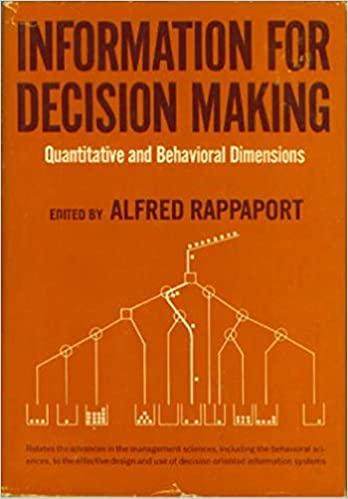Kitchen Supply, Inc. (KSI), manufactures three types of flatware: institutional, standard, and silver. It applies all indirect costs according to a predetermined rate based on direct labor-hours. A consultant recently suggested that the company switch to an activity-based costing system and prepared the following cost estimates for the recommended cost drivers. In addition, management estimated 7,500 direct labor-hours. Assume that the following cost driver volumes occurred in January: Actual labor costs were $14 per hour. Required: a. (1) Compute an activity rate for each cost driver using the estimated costs and estimated cost driver units prepared by the consultant. Actual labor costs were $14 per hour. Required: a. (1) Compute an activity rate for each cost driver using the estimated costs and estimated cost driver units prepared by the consultant. (2) Compute a predetermined plant-wide overhead rate under the traditional costing system using direct labor-hours as the allocation base. b. Compute the total production costs for each product for January using the traditional costing system with direct labor-hours as the allocation base and the predetermined rate computed in requirement a(2). c. Compute the total production costs for each product for January using the cost drivers recommended by the consultant and the activity rates computed in requirement a. (Note: Do not assume that total overhead applied to products in January will be the same for activity-based costing as it was for the labor-hour-based allocation.) Complete this question by entering your answers in the tabs below. Compute an activity rate for each cost driver using the estimated costs and estimated cost driver units prepared by the consultant. (Round your answers to 2 decimal places.) Actual labor costs were $14 per hour. Required: a. (1) Compute an activity rate for each cost driver using the estimated costs and estimated cost driver units prepared by the consultant. (2) Compute a predetermined plant-wide overhead rate under the traditional costing system using direct labor-hours as the allocation base. b. Compute the total production costs for each product for January using the traditional costing system with direct labor-hours as the allocation base and the predetermined rate computed in requirement a(2). c. Compute the total production costs for each product for January using the cost drivers recommended by the consultant and the activity rates computed in requirement a. (Note: Do not assume that total overhead applied to products in January will be the same for activity-based costing as it was for the labor-hour-based allocation.) Complete this question by entering your answers in the tabs below. Compute a predetermined plant-wide overhead rate under the traditional costing system using direct labor-hours as the allocation base. (Round your answer to 2 decimal places.) Actual labor costs were $14 per hour. Required: a. (1) Compute an activity rate for each cost driver using the estimated costs and estimated cost driver units prepared by the consultant. (2) Compute a predetermined plant-wide overhead rate under the traditional costing system using direct labor-hours as the allocation base. b. Compute the total production costs for each product for January using the traditional costing system with direct labor-hours as the allocation base and the predetermined rate computed in requirement a(2). c. Compute the total production costs for each product for January using the cost drivers recommended by the consultant and the activity rates computed in requirement a. (Note: Do not assume that total overhead applied to products in January will be the same for activity-based costing as it was for the labor-hour-based allocation.) Complete this question by entering your answers in the tabs below. Compute the total production costs for each product for January using the traditional costing system with direct labor-hours as the allocation base and the predetermined rate computed in requirement a(2). (Do not round intermediate calculations.) b. Compute the total production costs for each product for January using the traditional costing system with direct labor-hours as the allocation base and the predetermined rate computed in requirement a(2). c. Compute the total production costs for each product for January using the cost drivers recommended by the consultant and the activity rates computed in requirement a. (Note: Do not assume that total overhead applied to products in January will be the same for activity-based costing as it was for the labor-hour-based allocation.) Complete this question by entering your answers in the tabs below. Compute the total production costs for each product for January using the cost drivers recommended by the consultant and the activity rates computed in requirement a. (Note: Do not assume that total overhead applied to products in January will be the same for activity-based costing as it was for the labor-hour-based allocation.) (Do not round intermediate calculations.)











